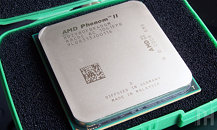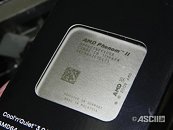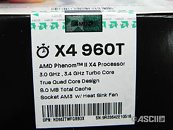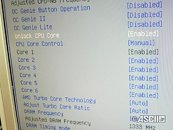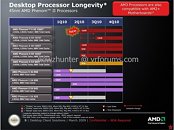Apr 16th, 2025 09:47 EDT
change timezone
Latest GPU Drivers
New Forum Posts
- The TPU UK Clubhouse (26116)
- Help me identify Chip of this DDR4 RAM (21)
- Last game you purchased? (772)
- 5070ti overclock...what are your settings? (5)
- Windows 11 fresh install to do list (23)
- How to relubricate a fan and/or service a troublesome/noisy fan. (229)
- GPU Memory Temprature is always high (16)
- Help For XFX RX 590 GME Chinese - Vbios (4)
- PCGH: "hidden site" to see total money spend on steam (3)
- Share your AIDA 64 cache and memory benchmark here (3053)
Popular Reviews
- G.SKILL Trident Z5 NEO RGB DDR5-6000 32 GB CL26 Review - AMD EXPO
- ASUS GeForce RTX 5080 TUF OC Review
- DAREU A950 Wing Review
- The Last Of Us Part 2 Performance Benchmark Review - 30 GPUs Compared
- Sapphire Radeon RX 9070 XT Pulse Review
- Sapphire Radeon RX 9070 XT Nitro+ Review - Beating NVIDIA
- Upcoming Hardware Launches 2025 (Updated Apr 2025)
- Thermaltake TR100 Review
- Zotac GeForce RTX 5070 Ti Amp Extreme Review
- TerraMaster F8 SSD Plus Review - Compact and quiet
Controversial News Posts
- NVIDIA GeForce RTX 5060 Ti 16 GB SKU Likely Launching at $499, According to Supply Chain Leak (182)
- NVIDIA Sends MSRP Numbers to Partners: GeForce RTX 5060 Ti 8 GB at $379, RTX 5060 Ti 16 GB at $429 (124)
- Nintendo Confirms That Switch 2 Joy-Cons Will Not Utilize Hall Effect Stick Technology (105)
- Over 200,000 Sold Radeon RX 9070 and RX 9070 XT GPUs? AMD Says No Number was Given (100)
- Nintendo Switch 2 Launches June 5 at $449.99 with New Hardware and Games (99)
- Sony Increases the PS5 Pricing in EMEA and ANZ by Around 25 Percent (85)
- NVIDIA PhysX and Flow Made Fully Open-Source (77)
- NVIDIA Pushes GeForce RTX 5060 Ti Launch to Mid-April, RTX 5060 to May (77)
News Posts matching #Zosma
Return to Keyword Browsing
AMD Bulldozer A Surprisingly Sell-Out Sales Success. Victims: Phenom II & Athlon II
AMD's new Bulldozer "FX" series of processors may be very lacklustre performers in reviewer's benchmarks and have garnered considerable scorn in enthusiast circles, but they're a very good performer for AMD's bottom line. Incredibly, they are selling out as soon as shops get them in stock - and they are not even priced very competitively against Intel's offerings, so perhaps the "It's an 8 core CPU!!" marketing is working well on the uninformed "enthusiast" after all? Mind you, what enthusiast, however uninformed, wouldn't know exactly how these products perform? Every tech website and computer magazine has covered these chips by now. The mind boggles.

Turbo Core Equipped Phenom II X4 Chips Sold in Japan
When AMD was giving final touches to its desktop six-core processors, the Phenom II X6 series, there was also talk of a new quad-core processor line based on the same six-core Thuban silicon, but with two cores disabled. The resulting silicon was codenamed "Zosma". Apart from the two "potentially" unlockable cores, Zosma brought to table AMD's Turbo Core technology, which dynamically overclocks two of the four cores beyond the chip's rated speed, while respecting the chip's stock TDP value. The Phenom II X4 960T, one of the first such chips, however, never made it to the market, AMD shelved Zosma.
Market hounds in Japan recently spotted stocks of "Zosma" Phenom II X4 960T Black Edition, thought to have been shelved until now. This quad-core chip with unlocked BClk multipler comes with the part number HD96ZTWFK4DGR, and is sold in PIB (processor in a box) packages. The chip was tested to allow unlocking of the disabled fifth and sixth cores, proving it's based on the Zosma silicon. It comes with a stock clock speed of 3.00 GHz (15x 200 MHz), but can bump clock speeds up to 3.40 GHz (17x 200 MHz). The chip features 512 KB of L2 cache per core, and 6 MB of shared L3 cache.
Market hounds in Japan recently spotted stocks of "Zosma" Phenom II X4 960T Black Edition, thought to have been shelved until now. This quad-core chip with unlocked BClk multipler comes with the part number HD96ZTWFK4DGR, and is sold in PIB (processor in a box) packages. The chip was tested to allow unlocking of the disabled fifth and sixth cores, proving it's based on the Zosma silicon. It comes with a stock clock speed of 3.00 GHz (15x 200 MHz), but can bump clock speeds up to 3.40 GHz (17x 200 MHz). The chip features 512 KB of L2 cache per core, and 6 MB of shared L3 cache.

AMD Cancels Phenom II X4 960T Quad-Core Processors Based on Thuban Die
In what could come as a bad news to enthusiasts looking forward to the AMD Phenom II X4 960T "Zosma" quad-core processor, AMD has scrapped plans to release it, at least to the retail market. The chip could still be available to OEM vendors designing their desktop products around it. In a circular to the press, an AMD representative said "I've been asked the question about whether there will be a Phenom II X4 960T "Thuban" quad-core by enough individuals, that I think it is a good idea to proactively share the answer to everyone. While there are indeed engineering CPU samples floating around of a 4-core Thuban 960T, I do not expect that processor will be released for general availability. Perhaps it may make its way to OEMs by special request, but that remains to be seen."
Phenom II X4 960T was a certain release from AMD until now. Various motherboard vendors released beta BIOS that could support the chip, and some enthusiasts with access to engineering samples were even successful in unlocking its disabled cores. The prospect of unlocking disabled cores to yield a six-core processor at the price of a typical quad-core processor is what garnered interest among some sections of the enthusiasts. For AMD, the adverse effect Zosma could have on the sales of more expensive Phenom II X6 seems to have outweighed propagating its new Turbo Core technology at more mainstream prices.
Phenom II X4 960T was a certain release from AMD until now. Various motherboard vendors released beta BIOS that could support the chip, and some enthusiasts with access to engineering samples were even successful in unlocking its disabled cores. The prospect of unlocking disabled cores to yield a six-core processor at the price of a typical quad-core processor is what garnered interest among some sections of the enthusiasts. For AMD, the adverse effect Zosma could have on the sales of more expensive Phenom II X6 seems to have outweighed propagating its new Turbo Core technology at more mainstream prices.

ASUS Develops Own Technology to Rival AMD Turbo Core and Intel Turbo Boost
ASUS designed its own technology comparable to AMD's Turbo Core, the ASUS Turbo Unlocker. The technology is claimed to be more advantageous than Turbo Core, since it sends every core into Boost state, rather than a limited number of cores designated as turbo cores. What's more, it supports several other Phenom II Black Edition series processors other than those based on the six-core Thuban or the quad-core Zosma. With single-threaded loads, the active core is given the maximum boost in clock speeds, while as multi-threaded load increases, even more number of cores enter a boost state. Boost state speeds decrease with increase in number of active cores. The technology is available on ASUS' entire range of motherboards based on the AMD 8-series chipsets. Details follow in a presentation by ASUS. It would be interesting to see if ASUS goes a step further and works out Turbo Unlocker for Intel Core i3 processors.

Phenom II X4 960T ''Zosma'' Unlock to Phenom II X6
AMD's upcoming series of Phenom II X4 900T series that supports AMD Turbo Core technology, and which are based on the "Zosma" die, have been confirmed to be able to unlock both its manufacturer-disabled cores to work as a six-core processor. Zosma is a "cut-down" version of AMD's Thuban six-core die, where two of its cores are disabled. With the remaining four cores, two can function with increased clock-speeds in boost-state as Turbo cores (3/6 could on the X6 chip).
The core unlocking is said to have been done on an AMD 890GX chipset based motherboard, in the same way disabled cores on Phenom II X3 and X2 chips are unlocked. One of the first models based on Zosma are the Phenom II X4 960T and X4 940T, which operate at 3.30 GHz and 3.00 GHz, respectively. Their Turbo Core speeds are up to 500 MHz over clock speeds, depending on the model. The X4 T-series could form AMD's mainstream processor in the sub-$200 range.
The core unlocking is said to have been done on an AMD 890GX chipset based motherboard, in the same way disabled cores on Phenom II X3 and X2 chips are unlocked. One of the first models based on Zosma are the Phenom II X4 960T and X4 940T, which operate at 3.30 GHz and 3.00 GHz, respectively. Their Turbo Core speeds are up to 500 MHz over clock speeds, depending on the model. The X4 T-series could form AMD's mainstream processor in the sub-$200 range.

New Roadmap Shows AMD's Desktop Processor Portfolio for Rest of 2010
A set of new slides by AMD to sections of the industry spills the beans on AMD's processor offer outlook for perhaps the rest of the year. It shows AMD to maintain focus on value-oriented models that etch away Intel's market share on grounds of price/performance, while the higher-end of the spectrum keeps up with the latest technologies including the industry-wide advent of the six-core processor era, as well as new power-state management technologies such as TurboCore, which steps up clock speeds of certain cores of the processors while powering down others, which the load is low or less-parallel.
Front-line processor lineups include the Phenom II X6, and Phenom II X4, including a new T X4 series that includes TurboCore support. AMD's transition towards these chips from the existing Deneb-based quad-core ones starts within this quarter lasting throughout Q2 and part of Q3 2010. It includes Phenom II X4 960T, a 3.00 GHz (3.40 GHz turbo) chip based on the Zosma die. It goes up with the Phenom II X6 1035T, a six-core chip clocked at 2.60 GHz (3.10 GHz turbo). A notch higher up is the Phenom II X6 1055T, clocked at 2.80 GHz (3.30 GHz turbo), which comes in 95W and 125W variants. At the top is the Phenom II X6 1090T Black Edition, an overclocker-friendly chip that runs at 3.20 GHz (3.60 GHz turbo). A little later in Q3, AMD will add in the Phenom II X6 1075T, clocked at 3.00 GHz (3.50 GHz turbo).
Front-line processor lineups include the Phenom II X6, and Phenom II X4, including a new T X4 series that includes TurboCore support. AMD's transition towards these chips from the existing Deneb-based quad-core ones starts within this quarter lasting throughout Q2 and part of Q3 2010. It includes Phenom II X4 960T, a 3.00 GHz (3.40 GHz turbo) chip based on the Zosma die. It goes up with the Phenom II X6 1035T, a six-core chip clocked at 2.60 GHz (3.10 GHz turbo). A notch higher up is the Phenom II X6 1055T, clocked at 2.80 GHz (3.30 GHz turbo), which comes in 95W and 125W variants. At the top is the Phenom II X6 1090T Black Edition, an overclocker-friendly chip that runs at 3.20 GHz (3.60 GHz turbo). A little later in Q3, AMD will add in the Phenom II X6 1075T, clocked at 3.00 GHz (3.50 GHz turbo).

AMD Phenom II X4 T Series Detailed
In a few weeks' time, AMD will be releasing its brand new set of six-core Phenom II X6 processors. These processors are based on the "Thuban" core, which is a socket AM3 implementation of the Istanbul six-core architecture. Along with as many as four Phenom II X6 models including a high-end Black Edition part, AMD will be introducing new quad-core processors under the Phenom II X4 T series. Some of the first two models in this series includes the Phenom II X4 960T and Phenom II X4 940T.
The Phenom II X4 960T operates at 3.30 GHz, while the 940T runs at 3.00 GHz. What makes these chips different from existing chips based on the Deneb die is that it is in fact based on the Thuban die with two cores disabled. The resulting quad-core chip is codenamed Zosma. The other characteristic feature about not only Zosma, but also Thuban in general, is the introduction of a feature called "Turbo Core". The feature senses performance needs and steps up clock speeds of some cores, while powering down others. The stepping up of clock speed happens on the fly, and using a jump in BClk multiplier by a few units. The new chips also come with the unofficial incentive of being able to unlock the two disabled cores to turn it into a six-core chip. Unlocking may not work in all cases.
The Phenom II X4 960T operates at 3.30 GHz, while the 940T runs at 3.00 GHz. What makes these chips different from existing chips based on the Deneb die is that it is in fact based on the Thuban die with two cores disabled. The resulting quad-core chip is codenamed Zosma. The other characteristic feature about not only Zosma, but also Thuban in general, is the introduction of a feature called "Turbo Core". The feature senses performance needs and steps up clock speeds of some cores, while powering down others. The stepping up of clock speed happens on the fly, and using a jump in BClk multiplier by a few units. The new chips also come with the unofficial incentive of being able to unlock the two disabled cores to turn it into a six-core chip. Unlocking may not work in all cases.
Apr 16th, 2025 09:47 EDT
change timezone
Latest GPU Drivers
New Forum Posts
- The TPU UK Clubhouse (26116)
- Help me identify Chip of this DDR4 RAM (21)
- Last game you purchased? (772)
- 5070ti overclock...what are your settings? (5)
- Windows 11 fresh install to do list (23)
- How to relubricate a fan and/or service a troublesome/noisy fan. (229)
- GPU Memory Temprature is always high (16)
- Help For XFX RX 590 GME Chinese - Vbios (4)
- PCGH: "hidden site" to see total money spend on steam (3)
- Share your AIDA 64 cache and memory benchmark here (3053)
Popular Reviews
- G.SKILL Trident Z5 NEO RGB DDR5-6000 32 GB CL26 Review - AMD EXPO
- ASUS GeForce RTX 5080 TUF OC Review
- DAREU A950 Wing Review
- The Last Of Us Part 2 Performance Benchmark Review - 30 GPUs Compared
- Sapphire Radeon RX 9070 XT Pulse Review
- Sapphire Radeon RX 9070 XT Nitro+ Review - Beating NVIDIA
- Upcoming Hardware Launches 2025 (Updated Apr 2025)
- Thermaltake TR100 Review
- Zotac GeForce RTX 5070 Ti Amp Extreme Review
- TerraMaster F8 SSD Plus Review - Compact and quiet
Controversial News Posts
- NVIDIA GeForce RTX 5060 Ti 16 GB SKU Likely Launching at $499, According to Supply Chain Leak (182)
- NVIDIA Sends MSRP Numbers to Partners: GeForce RTX 5060 Ti 8 GB at $379, RTX 5060 Ti 16 GB at $429 (124)
- Nintendo Confirms That Switch 2 Joy-Cons Will Not Utilize Hall Effect Stick Technology (105)
- Over 200,000 Sold Radeon RX 9070 and RX 9070 XT GPUs? AMD Says No Number was Given (100)
- Nintendo Switch 2 Launches June 5 at $449.99 with New Hardware and Games (99)
- Sony Increases the PS5 Pricing in EMEA and ANZ by Around 25 Percent (85)
- NVIDIA PhysX and Flow Made Fully Open-Source (77)
- NVIDIA Pushes GeForce RTX 5060 Ti Launch to Mid-April, RTX 5060 to May (77)
